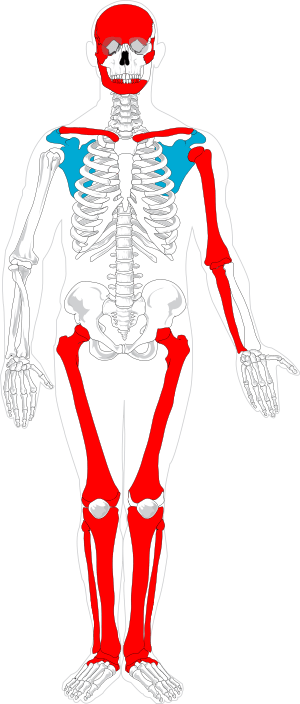Stoneyisland Man facts for kids
The Stoneyisland Man is the name given to a very old human body found in a bog. It was discovered in the Stoneyisland Bog in County Galway, Ireland. This amazing find happened on May 13, 1929. Bog bodies are human remains that have been naturally preserved in peat bogs. The special conditions in bogs can keep bodies from decaying for thousands of years.
How the Stoneyisland Man Was Found
In 1929, three men named James Dolphin, Thomas Rodgers, and John Spain were cutting turf in the Stoneyisland Bog. Turf is a type of fuel made from dried peat, which is decayed plant matter from bogs. While they were working, they found a human skeleton.
At first, they thought it might be a local man who had gone missing. But later, experts found out the skeleton was over five thousand years old!
The skeleton was found lying on its back. It was only a few inches above the marl, which is a type of soil at the bottom of the bog. The body was beneath about 10 feet (305 cm) of uncut turf. The skeleton was complete, with its arms stretched out to the sides.
No tools or items were found with the skeleton. However, Mr. Dolphin said they had found tree stumps and ashes deeper in the bog before. He also mentioned finding a dugout canoe (a boat made from a hollowed-out tree trunk) in another part of the bog.
Mr. T. Shea, who worked for the Ordnance Survey (a mapping group), examined the remains. He carefully dug out the skeleton. Then, Professor Shea from the Anatomical Museum at University College, Galway, studied it.
What Experts Learned About the Stoneyisland Man
Professor Shea studied the skeleton carefully. He concluded that the body had not slowly sunk into the bog over time. Instead, it was found exactly where it had originally been. He thought the man's outstretched arms meant he had drowned. The professor believed the man sank to the bottom of what was once a lake, and then the bog grew over him.
Professor Shea also determined that the body was a man. He was about forty years old when he died. His height was about 5 feet 2 inches (157 cm). The man's lower jaw, teeth, and many limb bones looked like those found in other prehistoric skeletons from Western Europe.
The shape of some arm and leg bones helped date the skeleton even more. These shapes are typical of Neolithic man. The Neolithic period, also called the New Stone Age, was a time when people started farming.
Scientists also studied pollen and peat from the bog. This helped them date the remains to sometime after 4500 BCE. Later, radiocarbon dating was used. This method measures how much carbon-14 is left in something to find its age. Radiocarbon dating showed the Stoneyisland Man lived between 3320 and 3220 BC.


